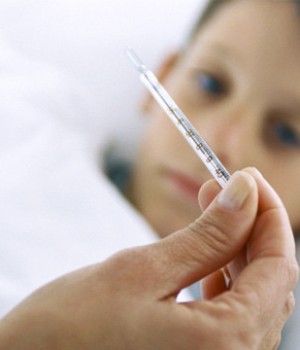Finding you toddler face down on the floor convulsing likely sends most parents into a state of shock. Especially when they have never previously seen their small child do so, nor do they know of any family history of genetic disorders that might cause something like this to happen. Surprisingly, these seizures, known as Simple Febrile Seizures, occur for 1 in 25 children in the United States.
Brought on by something as simple as a fever, febrile seizures most commonly happen between the ages of six months and five years. A viral illness can bring on an elevated temperature that is thought to cause the seizures by one of two things: 1. How high the fever gets, or 2. The rate of the temperature increase. The temperature spiking then leads to loss of bowels, convulsions, irregular breathing and sometimes vomiting; all while the child is unconscious.

SFS are characterized by a duration lasting less than 15 minutes and a general ‘all over’ body shaking rather than being restricted to a part of the body such as an arm or leg. After the event, when the child becomes more alert, they will appear very disoriented, almost ‘zombie like,’ before returning back to their normal state. “Think of it as a computer doing a system reboot after crashing,” says Dr. Matthew Mendenhall, Castle Rock Adventist Hospital.
But not too worry if you make a trip to the emergency room and your paperwork reflects that your child experienced a fibrile episode. It is unlikely that they will have another episode of this kind. And the older a child is when the first febrile seizure occurs, the less likely that child is to have more. However, the small chance that they have a second, research shows any subsequent seizures diminish by the time they hit kindergarten, with no long-lasting effects or damage to the brain.
Yet, should you see your child with aforementioned symptoms, DON’T PANIC. Try to keep a level head and follow these instructions:
1. Make sure their clothing is not tight around their neck and place them on their side to prevent choking on vomit or saliva.
2. During this time, do not give your child any medicines by the mouth and make sure to try and time the length of the seizure.
3. After consciousness begins to return, if it’s during office hours, call their doctor to be seen. If it’s after hours, take them to the nearest emergency room for a professional examination.













